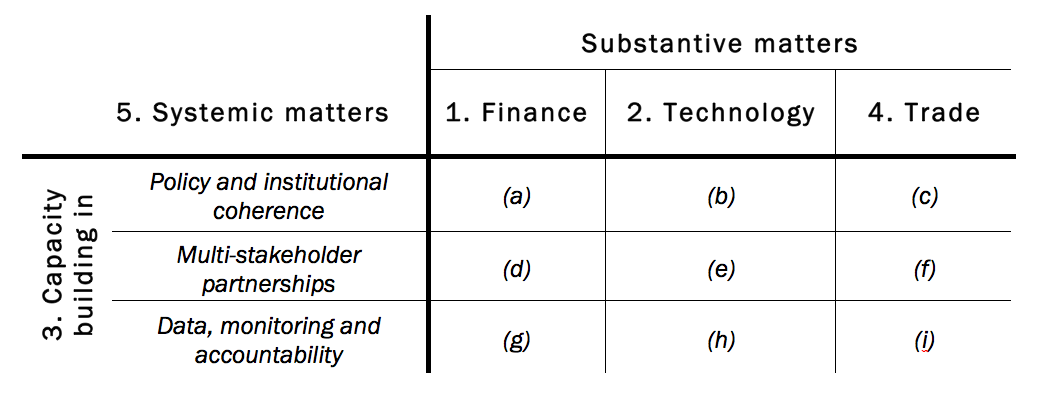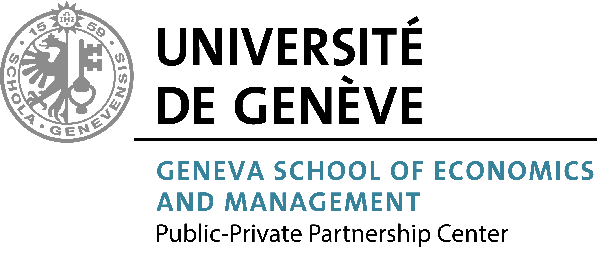SDG17: The partnership goal?
Dr. Moira V. Faul
A series of global summits in 2015 hammered out a number of agreements to address global injustices and inequalities, including in development financing (July), sustainable development (September) and climate change (December). The Sustainable Development Goals (SDGs),[1]gave a clear impetus in to partnerships between public, private and voluntary sectors in solving the significant – and complexly interrelated[2]– challenges faced by societies across the globe.
Each of the interrelated Sustainable Development Goals (SDGs) has a single focus, except Goal 17, which is focused on ‘strengthening the means of implementation and revitalising the Global Partnership for Sustainable Development’. Although Goal 17 tends to be seen as ‘the partnership goal’, it actually covers a lot more ground. It is broken down into five sub-issues that will enable the implementation of these global goals:
- finance,
- technology,
- capacity building,
- trade, and
- systemic issues (defined as policies and institutions; multi-stakeholder partnerships; and data, monitoring and accountability).
Thus, despite recognising the complex inter-linkages within and between the other goals in the official documents, this simple listing out of these substantive aspects of SDG17 appear to be treated as separate phenomena. This disconnection is also reflected in much academic and policy research.
Yet, there are systemic linkages between these different aspects of Goal 17 that cannot be ignored if we seek to give a full account of the issues that are critical to the implementation of all of the SDGs.
Rather than perpetuating conventional debates, policy making and practices in each area separately, the table below teases apart the diverse elements of Goal 17, and brings them back into communication with each other in a more meaningful way. Each of the headings in bold represents a sub-heading in the outcome document from the United Nations summit for the adoption of the post-2015 development agenda.[1]The three sub-headings that are italicized in the UN outcome document are also italicized here, and the numbering follows the numbering in that document.
Systemic interlinkages in SDG17:

For example, using this table, we might specifically address (a) the policies and institutions in finance or (d) global financing partnerships. Then, reading horizontally, the interlinkages within one substantive matter, but between different systemic matters could be explored more systematically (say, policies and partnerships in finance, that is cells (a) and (d) on the table above). Also, reading vertically, connections within one systemic matter examined in different substantive topics can be explored more thoroughly (such as partnerships in both finance and trade, cells (d) and (f) in the table above).
Additionally, this framework is flexible in that it can be applied to substantive issues related to any of the other SDGs, and can focus on global, regional, national or sub-national levels of policy or practice. An example might be specifying the policy coherence, partnerships and data in financing for, say, education (SDG4), and then working out what capacity building would follow from that.
With this zoom into SDG17, we do not seek to underplay the importance of partnerships and partnership research. Rather, we hope to (1) illuminate the policy and practice contexts in which partnerships are expected to contribute to the SDGs, (2) clarify that SDG17 is not solely the ‘partnership goal’, highlighting that partnerships are one (important) piece in a complex puzzle of solutions to achieve a more sustainable world. Thus, the goal of this framework is to clarify what action for implementing the SDGs can be taken, when, where, how and by whom, by specifying how different aspects of Goal 17 intersect and align.
[1]UN: General Assembly. (2015). Draft Resolution A/69/L.85: Transforming Our World: The 2030 Agenda for Sustainable Development. New York: UN. (pp. 27-28)
[2]See, for example, ICSU: International Council for Science. (2017). A guide to SDG interactions: from science to implementation. Paris.; Le Blanc, D. (2015). Towards Integration at Last? The Sustainable Development Goals as a Network of Targets. Sustainable Development, 23, 76–187.; UNRISD: UN Research Institute for Social Development. (2016). Policy Innovations for Transformative Change: Implementing the 2030 Agenda for Sustainable Development. Geneva: UNRISD.
